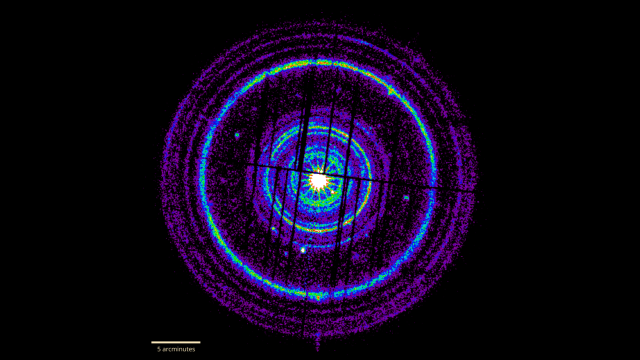The gamma-ray burst, affectionately dubbed ‘BOAT’ (Brightest of All Time), has been found to emit gamma-rays with energies reaching up to 13 teraelectronvolts, as revealed by a collaboration of scientists who have studied these emissions.
Gamma-ray bursts are the brightest explosions the cosmos has to offer, besides the Big Bang—the explosion that happened 13.77 billion years ago that marks the beginning of time. The BOAT was detected on the morning of October 9, 2022, by the Gemini South telescope in Chile, operated by the National Science Foundation’s NOIRLab. Its official name is GRB 221009A. It occurred 2.4 billion light-years from Earth and was exceptionally long-lasting, as well as 70 times brighter than any previously recorded gamma-ray burst.
The BOAT’s superlative brightness was confirmed in March; while not likely to actually be the brightest of all time, one researcher stated at the time that it is “likely the brightest burst at X-ray and gamma-ray energies to occur since human civilization began.” A 1-in-10,000-year event, ripe for scientific observation.
Now, the LHAASO Collaboration (short for the Large High Altitude Air Shower Observatory) reports extremely high-energy gamma rays from the BOAT. The star that bore the gamma-ray burst was more than 20 times heavier than the Sun, and the burst lasted hundreds of seconds. In a paper published today in Science Advances, the collaboration described over 140 gamma-rays with energies exceeding 3 teraelectronvolts, between 3.5 minutes and 15 minutes after the event began. The gamma-rays were detected by the LHAASO-KM2A detector in Sichuan, China.

In the standard model of gamma-ray burst afterglows, “afterglow radiation originates from the collision of the rapidly moving ejecta with the surrounding gas, generating high-speed shocks that accelerate electrons to very high energies,” said lead author Songzhan Chen, a physicist at the Institute of High Energy Physics Chinese Academy of Sciences and the Tianfu Cosmic Ray Research Center, in an email to Gizmodo. These electrons further collide with surrounding photons to produce high-energy gamma-ray radiation.”
“Theoretically, the higher the energy of these photons, the faster the radiation intensity should decay,” Chen added. “However, LHAASO’s precise measurement of its high-energy radiation spectrum in this instance revealed that the GRB radiation extends all the way to 13 TeV, showing no signs of decay. Therefore, this spectrum challenges the standard model of GRB afterglows, suggesting that photons of around 10 TeV in GRB afterglows may be produced by more complex particle acceleration processes or new radiation mechanisms.”
More scrutiny of the BOAT will likely reveal more details of its origins and impacts on the surrounding universe—even impacts on our own planet. According to a separate paper published yesterday in Nature Communications, the BOAT may have also caused perturbations high in Earth’s ionosphere, the sort of thing that could effectively deplete the planet’s ozone layer for a short period of time.
LHAASO was completed in 2021 and is expected to operate for 20 more years, Chen added, so there will be plenty more analysis of future gamma-ray bursts in the future. But none may be as bright as the luminous BOAT.
